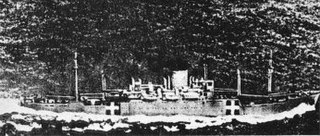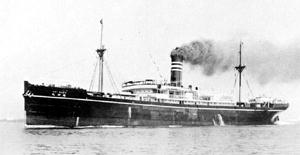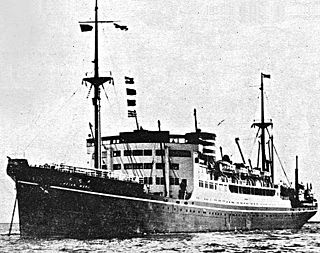
USS Tullibee (SS-284), a Gato-class submarine, was the first ship of the United States Navy to be named for the tullibee. Her keel was laid down on 1 April 1942 at Mare Island, California, by the Mare Island Navy Yard. She was launched on 11 November 1942 sponsored by Mrs. Kenneth C. Hurd; and commissioned on 15 February 1943, Commander Charles F. Brindupke in command.

USS Snook (SS-279), a Gato-class submarine, was the first ship of the United States Navy to be named for the common snook, an Atlantic marine fish that is bluish-gray above and silvery below a black lateral line.

USS Finback (SS-230), a Gato-class submarine was the first ship of the United States Navy to be named for the finback.

USS Gurnard (SS-254), a Gato-class submarine, was the first ship of the United States Navy to be named for the gurnard.

USS Seahorse (SS-304), a Balao-class submarine, was the first submarine and second ship of the United States Navy to be named for the seahorse, a small fish whose head and the fore part of its body suggest the head and neck of a horse.

Nippon Yūsen Kabushiki Kaisha, also known as NYK Line, is a Japanese shipping company and is a member of the Mitsubishi keiretsu. The company has its headquarters in Chiyoda, Tokyo, Japan. It has a fleet of about 800 ships, which includes container ships, tankers, bulk and woodchip carriers, Ro-Ro car carriers, reefer vessels, LNG carriers, and cruise ships.

Tango Maru (丹後丸), originally named Rendsburg, was a cargo ship built in Germany in 1925. It was sunk by an American submarine on February 25, 1944, while in the service of the Imperial Steamship Co., a Japanese government-owned company. The sinking cost about 3,000 passengers and crew their lives.

Chūyō was a Taiyō-class escort carrier originally built as Nitta Maru, the first of her class of three passenger-cargo liners built in Japan during the late 1930s. She was requisitioned by the Imperial Japanese Navy (IJN) in late 1941 and was converted into an escort carrier in 1942. She spent most of her service ferrying aircraft, cargo and passengers to Truk until she was torpedoed and sunk by an American submarine in late 1943 with heavy loss of life.

Hikawa Maru (氷川丸) is a Japanese ocean liner that Yokohama Dock Company built for Nippon Yūsen Kabushiki Kaisha. She was launched on 30 September 1929 and made her maiden voyage from Kobe to Seattle on 13 May 1930. She is permanently berthed as a museum ship at Yamashita Park, Naka-ku, Yokohama.

The Awa Maru (阿波丸) was a Japanese ocean liner owned by Nippon Yusen Kaisha. The ship was built in 1941–1943 by Mitsubishi Shipbuilding & Engineering Co. at Nagasaki, Japan. The vessel was designed for passenger service, but the onset of war by the time work was completed changed requirements, and she was requisitioned by the Japanese Navy. While sailing as a relief ship under Red Cross auspices in 1945, she was torpedoed by USS Queenfish (SS-393), resulting in the death of all but one of the 2,004 people aboard.
A number of steamships have carried the name Vega, including

Ōmi Maru (近江丸) was the name of Japanese cargo ship owned by Nippon Yusen Kaisha (NYK), Tokyo.

The steam ship Cap Finisterre was a German transatlantic ocean liner of the early 20th century, which was transferred to Japan in 1920 as German war reparations, and renamed Taiyō Maru (大洋丸) on trans-Pacific routes. She was sunk on army service by an American submarine in 1942, during World War II, with the loss of over 800 lives, mostly civilians.

Aikoku Maru (愛国丸) was an armed merchant cruiser of the Imperial Japanese Navy in World War II. The ship entered service in 1940, the ship was later converted to an ammunition ship. She was sunk in February 1944 during Operation Hailstone.

Heian Maru (平安丸) was a Japanese ocean liner launched in 1930 and operated primarily on the NYK line's trans-Pacific service between Yokohama and Seattle. Shortly before the outbreak of the Pacific War, it was requisitioned by the Imperial Japanese Navy and converted to use as an auxiliary submarine tender. In 1944 it was sunk by American aircraft at Chuuk Lagoon during Operation Hailstorm. Its submerged hulk – the largest of Chuuk's "Ghost Fleet" – remains a popular scuba diving destination.

The Hitachi Maru (常陸丸) was a 6,172 gross ton combined passenger-cargo ship built by Mitsubishi Shipbuilding in Nagasaki, for NYK Lines in 1898. She was requisitioned in 1904 by the Imperial Japanese Army during the Russo-Japanese War.

Akagi Maru was one of three Akagi Maru-class armed merchantmen of the Imperial Japanese Navy, and was launched in 1936. Akagi Maru was used initially used as a refrigerated cargo/passenger ship between ports in Japan, Europe and South America. The ship took part in World War II in the Pacific Ocean and was sunk with great loss of life by air attack on 17 February 1944 in Chuuk Lagoon as a part of the Allied Operation Hailstone.
Three naval vessels of Japan have been named Kongō:















